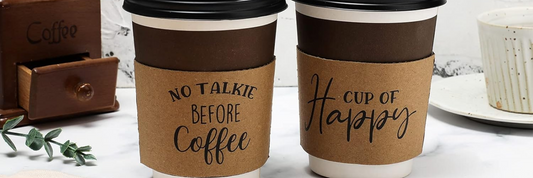Our dependence on single-use plastic packaging has become a major environmental concern. However, a promising alternative is emerging: cornstarch, a type of plant-based packaging. This article will delve into the world of cornstarch packaging, exploring its creation process, lifecycle, and the advantages and disadvantages it presents. Ultimately, we will examine the compelling reasons why choosing cornstarch packaging can be a significant step towards a more sustainable future.
What Is Cornstarch Packaging?
Cornstarch packaging represents a novel approach to sustainable packaging solutions. It leverages polylactic acid (PLA), a bioplastic meticulously derived from the fermentation of plant starches, predominantly cornstarch. This innovative material offers functionality akin to traditional plastics, but with crucial distinctions:
- Renewablity: In stark contrast to conventional plastics sourced from petroleum, cornstarch packaging relies on a renewable resource - cornstarch. This shift promotes a more sustainable material life cycle.
- Biodegradability: Under appropriate industrial composting conditions, cornstarch packaging exhibits the remarkable ability to decompose. This stands in stark contrast to traditional plastics, notorious for their persistence in landfills for extended periods, often exceeding centuries.
The confluence of these characteristics’ positions cornstarch packaging as a compelling alternative for environmentally conscious consumers and businesses alike.

How Is Cornstarch Packaging Made?
The production of cornstarch packaging leverages a biorefining process to convert readily available plant starches into a bioplastic material.
Here's a breakdown of the key steps:
- Starch acquisition: Cornstarch serves as the primary raw material.
- Fermentation: The starches undergo a controlled fermentation process, similar to yogurt production. This step utilizes microorganisms to convert the complex starches into simpler sugars.
- Polymerization: The resulting sugars are then transformed into polylactic acid (PLA) through a polymerization process. PLA essentially functions as the building block for the bioplastic.
- Pellet formation: The PLA undergoes a gentle heating process, followed by molding into uniform pellets.
- Thermoforming: Finally, the PLA pellets are reheated to a molten state and shaped into the desired final product forms, such as food containers or utensils.
This biorefining approach offers a significant advantage compared to traditional plastics derived from petroleum. Cornstarch, a renewable resource, forms the foundation of cornstarch packaging, promoting a more sustainable production cycle.
Lifecycle of a Cornstarch Packaging
Unlike traditional plastics, cornstarch food packaging boasts a lifecycle centered on renewable resources and potential biodegradation. Let's explore its journey from production stage to use stage and end-of-life stage.
- Production Stage: The journey begins with corn, a plant grown from readily available seeds. The kernels are processed to extract starch, which then undergoes fermentation and other processes to transform into polylactic acid (PLA), the building block of corn starch packaging. Finally, the PLA is molded into desired shapes like food containers or utensils.
- Use stage: During its use stage, the cornstarch packaging protects and contains the product, similar to traditional plastics.
- End-of-life: This is where cornstarch truly shines. Ideally, used containers enter industrial composting facilities. Here, controlled heat and moisture create optimal conditions for microorganisms to break down the PLA into its natural components in just 180 days. This breakdown leaves behind organic matter that enriches the soil, promoting a circular economy.
Cornstarch food packaging offers a clear advantage in its potential biodegradability compared to traditional plastics that can last in landfills for centuries.

Advantages and Disadvantages of Cornstarch Packaging
Cornstarch food packaging has emerged as a promising alternative to traditional plastics, but like most innovations, it comes with its own set of advantages and disadvantages. They are explained as below.
Advantages
Corn starch packaging offers differents advantages, including:
- Biodegradable and Compostable: Under ideal conditions, cornstarch food packaging breaks down through composting, significantly reducing landfill waste and its associated environmental issues.
- Renewable Resources: Unlike traditional plastics derived from petroleum, cornstarch packaging relies on readily available and renewable resources like corn, promoting sustainability.
- Reduced Carbon Footprint: Studies suggest the production of cornstarch packaging generally requires less energy compared to conventional plastic manufacturing.
- Safe for Food Contact: Cornstarch packaging is generally considered safe for food contact, free from harmful chemicals commonly found in some traditional plastics.
- Versatility: Cornstarch-based materials can be molded into various shapes, offering a viable option for diverse packaging applications, from food containers to utensils.
Disadvantages
Beside the numerous advantages, there are still some disadvantages, including:
- Limited Heat Resistance: Cornstarch packaging often struggles with high temperatures compared to traditional plastics. This limits its use in applications requiring heat tolerance, like hot food containers.
- Composting Infrastructure Dependence: Optimal biodegradation relies on industrial composting facilities, which may not be readily available in all regions.
- Potential for Land-Use Changes: Large-scale corn production for cornstarch packaging could lead to land-use changes or contribute to existing agricultural concerns.
- Higher Cost: Currently, cornstarch food packaging might be more expensive than traditional plastic options due to evolving production processes.
- Home Composting Limitations: While possible in some cases, home composting of cornstarch food packaging may be slower and less efficient compared to industrial facilities.
In brief, cornstarch food packaging offers a compelling alternative with its eco-friendly attributes. However, factors like composting infrastructure availability and potential agricultural concerns should be considered. So, should you choose packaging made from cornstrarch? We will explain the main reasons in the next section.
Reasons Why Business Choose Cornstarch Food Packaging Instead of Single-use Plastic
In today's environmentally conscious marketplace, businesses are increasingly seeking sustainable solutions. This shift has led many to favor cornstarch packaging over traditional single-use plastics. Here's a breakdown of the key reasons driving this trend:
Environmental Benefits:
- Reduced Landfill Waste: Cornstarch food packaging biodegrades in a controlled composting environment, diverting waste from landfills that overflow with traditional plastics.
- Renewable Resources: By utilizing corn, a readily available and renewable resource, businesses lessen their reliance on fossil fuels for plastic production.
- Lower Carbon Footprint: Studies suggest the production of cornstarch packaging often requires less energy compared to conventional plastic manufacturing, contributing to a smaller environmental impact.
Brand Image and Customer Appeal:
- Sustainability Messaging: Choosing corn starch packaging allows businesses to showcase their commitment to environmental responsibility, resonating with eco-conscious consumers.
- Positive Public Perception: Consumers are increasingly drawn to brands that prioritize sustainability. Cornstarch packaging demonstrates a company's proactive approach to environmental issues.
- Meeting Consumer Demands: With growing consumer awareness about plastic pollution, businesses that adopt cornstarch packaging cater to the evolving market demands for eco-friendly alternatives.
Potential Cost Efficiency (Long-Term):
- Cost Parity Potential: While currently cornstarch food packaging might have a slight cost premium, as production technology advances and adoption increases, the price gap with traditional plastics might narrow.
- Waste Management Savings: Businesses that implement responsible waste management practices may find cost savings associated with diverting compostable cornstarch packaging from landfill fees typically associated with traditional plastics.
Performance Considerations:
- Versatility: Cornstarch food packaging can be molded into various shapes, offering a viable solution for diverse applications, potentially replacing a range of single-use plastic options.
- Food Safety: Cornstarch packaging is generally considered safe for food contact, free from harmful chemicals commonly found in some traditional plastics.
Overall, the benefits of reduced environmental impact, enhanced brand image, and potential long-term cost efficiency are making cornstarch packaging an increasingly attractive option for businesses seeking to move away from single-use plastics.
Eco-friendly Product Made Of Cornstarch at Kimecopak
Kimecopak is proud to introduce our biodegradable straws that made from cornstarch, the ideal solution for enhancing your summer beverage offerings! Our biodegradable straws are:
- 8mm Diameter: Perfectly accommodates a wide range of beverages, including thick smoothies, milkshakes, and boba tea with tapioca pearls.
- No soggy even in hot water: Ensures a comfortable and consistent drinking experience without compromising straw integrity.
- Individually Wrapped: Promotes hygiene and convenience for both staff and customers.

We understand the importance of reliable partnerships. Kimecopak offers Subscribe for Happy Life program for long-term partner with exclusive benefits, including:
- Fixed Pricing for 6 Months: Enjoy budget certainty for seamless cost management.
- Immediate Savings of 5-7%: Reduce your operational expenses and enhance profitability.
- Complimentary Storage: Maintain a readily available inventory without burdening your storage space.
- Scheduled Delivery: Ensure timely deliveries to meet your business demands.
For more information about biodegradable straws and other eco-friendley packaging, please contact us via email halo@kimecopak or Kimecopak Facebook Fanpage.
Conclusion
Cornstarch packaging offers a promising future, boasting renewable resources and potential biodegradation. This significantly reduces landfill waste compared to traditional plastics. Though limitations exist, advancements hold promise for cornstarch to become a sustainable packaging leader. By embracing this eco-conscious solution, businesses and consumers can collectively contribute to a greener tomorrow.









